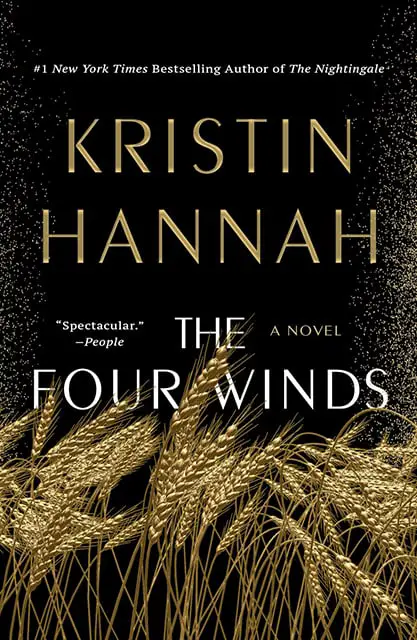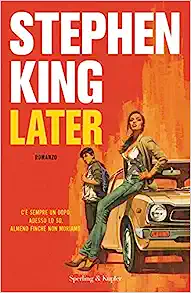Kurt Vonnegut, known for mixing humor with deep thoughts, gave us the fantastic book “Cat’s Cradle.” It’s a story where science and faith mix in surprising ways. Get ready for a journey that’ll make you think twice about what you know. It’s like a puzzle that keeps changing as you try to solve it. Let’s explore the depths of “Cat’s Cradle,” investigating its themes, characters, and lasting legacy.

What’s Inside The Cat’s Cradle?
Cat’s Cradle was written in the early 1960s, a time of significant cultural and historical change in the United States. But it was first published in 1963 by Holt, Rinehart & Winston. The released time was amidst the Cold War tensions between the United States and the Soviet Union, as well as the looming threat of nuclear annihilation. It spans around 250 to 300 pages, depending on the edition. This masterpiece is often categorized as science fiction or speculative fiction, although it also contains elements of satire and dark humor.
Vonnegut’s own experiences as a soldier in World War II played a role in shaping “Cat’s Cradle.” He witnessed the devastation of the atomic bombings of Hiroshima and Nagasaki, which left a profound impact on his worldview. These experiences informed the novel’s themes of science, technology, and the potential consequences of human innovation gone awry.
The story is narrated by John, who goes by the nickname Jonah and is writing a book about the day the atomic bomb was dropped on Hiroshima. Through his research, the story revolves around his investigation into the Hoenikker family, particularly the late Dr. Felix Hoenikker, one of the fathers of the atomic bomb.
John is curious about the strange Hoenikker family and ends up going to a fictional island called San Lorenzo to learn more and write a book about the Hoenikker family and their role in creating the atomic bomb. But things get really wild when he discovers a dangerous substance called Ice-nine, also created by Dr. Hoenikker, Ice-nine has the power to instantly freeze all water on Earth, posing a potential global catastrophe if it falls into the wrong hands.
Jonah meets Dr. Hoenikker’s eccentric children, each of whom has inherited a piece of ice-nine. His journey takes him to the impoverished Caribbean island nation of San Lorenzo, where he encounters a dictatorial leader and the residents’ practice of a unique. He was invented religion called Bokononism.
Bokononism is a satirical religion that embraces life’s absurdities. Jonah’s interactions with the island’s culture and people allow him to grapple with questions about faith, the nature of truth, and the pursuit of knowledge. Meanwhile, the presence of ice-nine on the island creates the potential for a global crisis.
As the story progresses, Jonah is faced with ethical dilemmas and the dire consequences of Dr. Hoenikker’s creation. The novel explores themes such as the tension between science and religion, the responsibilities of scientists, the dangers of blind faith, and the absurdity of human behavior.
Ultimately, Cat’s Cradle is a thought-provoking commentary on the potential consequences of human invention and the fragile nature of our world. Jonah’s journey serves as a lens through which readers can consider broader questions about ethics, responsibility, and the search for meaning in life.
Also Read: Reading Order of Kurt Vonnegut Books [A Must Read]
Meet the Memorable Characters of Cat’s Cradle
“Cat’s Cradle” is filled with a diverse cast of characters, each contributing to the complexity and depth of the novel.
1. John (The Narrator): John narrates the story of his quest to write a book about the atomic bomb’s creator, Felix Hoenikker. He is an introspective and detached individual. He often was observing events with a critical eye. Through his narrative, readers gain insights into the absurdities of human behavior and the consequences of scientific progress.
2. Felix Hoenikker: Felix is a brilliant but eccentric scientist who played a key role in the development of the atomic bomb. He is portrayed as a childlike figure, consumed by his scientific pursuits and indifferent to their implications. His discovery of ice-nine, a substance with catastrophic potential, drives much of the novel’s plot.
3. Angela Hoenikker: Angela, Felix’s daughter, grapples with the legacy of her father’s work and the dysfunction within her family. Despite her emotional turmoil, she longs for genuine connections and finds herself drawn to John, leading to a complex and tumultuous relationship.
4. Newt Hoenikker: Newt, Felix’s son, is a dwarf with a talent for painting. Despite facing societal prejudices and physical challenges, he possesses a sharp intellect and a wry sense of humor. Newt serves as a source of both comic relief and philosophical insight, offering a unique perspective on the events unfolding around him.
5. Frank Hoenikker: The eldest of Felix’s children, Frank leads a more conventional life as a government bureaucrat. Unlike his father and siblings, Frank is pragmatic and grounded, attempting to navigate the complexities of his family’s legacy while pursuing his own ambitions within the bureaucratic machine.
6. Dr. Asa Breed: Dr. Breed is the head of the Research Laboratory where Felix Hoenikker once worked. He embodies the ethical indifference and bureaucratic mindset that often accompanies scientific pursuits, prioritizing progress over ethical considerations.
7. Dr. Julian Castle: Dr. Castle is the enigmatic owner of the island of San Lorenzo, where much of the novel’s action takes place. He is a larger-than-life figure, known for his eccentricities and philosophical musings. Dr. Castle challenges John’s worldview, forcing him to confront his own beliefs and assumptions.
8. Mona Aamons Monzano: Mona is the wife of San Lorenzo’s dictator, “Papa” Monzano. Trapped in a loveless marriage and yearning for freedom, Mona finds herself drawn to John, sparking a forbidden romance that serves as a catalyst for personal and political upheaval.
9. “Papa” Monzano: The ruthless dictator of San Lorenzo, “Papa” Monzano rules through fear and manipulation. His iron grip on power is maintained at the expense of his people’s freedom and well-being, making him a symbol of tyranny and oppression.
10. Bokonon: Bokonon is the enigmatic founder of Bokononism, a satirical religion practiced by the people of San Lorenzo. His writings offer a humorous yet profound commentary on the human condition, challenging conventional notions of truth and morality.
11. H. Lowe Crosby: A wealthy American businessman, Crosby represents the moral ambiguity and selfish pursuits of Western capitalism. He befriends John and invites him to San Lorenzo, motivated by curiosity and a desire for novelty rather than genuine empathy.
12. Hazel Crosby: Lowe Crosby’s wife, Hazel, is depicted as a shallow and materialistic woman. Her primary concerns revolve around social status and appearances, highlighting the emptiness of superficial pursuits in the face of larger existential questions.
13. Sherman Krebbs: John’s former classmate, Krebbs, becomes involved in the cult of Bokononism. Unlike John, who remains detached and analytical, Krebbs embodies a passionate yet ultimately futile search for meaning in a chaotic world, often leading to tragic consequences.
14. Earl McCabe: A cynical journalist, McCabe accompanies John to San Lorenzo in search of a story. He represents the opportunistic and morally bankrupt tendencies of the media, willing to exploit tragedy for personal gain without regard for the consequences.
15. Philip Castle: Dr. Julian Castle’s son, Philip, becomes romantically involved with Mona Monzano. His idealism and naivety are contrasted with Mona’s world-weary cynicism, highlighting the complexities of love and human relationships in a tumultuous world.
16. Papa Monzano’s Daughter: Though briefly mentioned, Papa Monzano’s daughter symbolizes the collateral damage of his oppressive regime, her fate becoming a point of contention in the struggle for power on San Lorenzo.
17. Emily Hoenikker: Dr. Hoenikker’s absent wife, Emily’s absence adds to the sense of family dysfunction and the emotional void within the Hoenikker household.
18. Dr. Asimov: A scientist whose work on Ice-Nine contributes to the existential threat it poses to humanity, Dr. Asimov represents the unintended consequences of scientific discovery.
19. Crosby’s Nurse: The nurse who cares for H. Lowe Crosby symbolizes the role of caregivers in supporting those in need, often overlooked in narratives dominated by more prominent figures.
20. Papa Monzano’s Bodyguard: The embodiment of Papa Monzano’s oppressive regime, his bodyguard represents the use of violence and intimidation to maintain power and control.
21. Papa Monzano’s Advisors: Supporting characters within Papa Monzano’s government, these advisors embody the corruption and self-serving nature of political elites, perpetuating the cycle of oppression and exploitation.
22. San Lorenzan Citizens: The oppressed yet complicit inhabitants of San Lorenzo, the citizens reflect broader themes of power dynamics and the struggle for autonomy in the face of tyranny and injustice.
Each character in “Cat’s Cradle” contributes to the novel’s exploration of themes such as the consequences of scientific advancement, the search for meaning in a chaotic world, and the interconnectedness of humanity.
Why You Shouldn’t Miss This Classic?
Honestly, Cat’s Cradle” is a super cool book you shouldn’t miss out on! It offers a mind-blowing story filled with surprises at every turn. Kurt vonnegut takes readers on a wild adventure through a plot that is both quirky and captivating.
There are so many aspects that will definitely strike you. Here’s why:
Mind-Blowing Story: It’s like going on a wild adventure with surprises at every turn! You’ll meet quirky characters and dive into a crazy plot that keeps you hooked till the end.
Deep Themes, Easy to Grasp: Even though it’s a fun read, “Cat’s Cradle” talks about big ideas like science, religion, and the end of the world. But don’t worry, the author, Kurt Vonnegut, makes it easy to understand without making your brain hurt.
Laugh-out-Loud Funny: You’ll find yourself chuckling throughout the book. Vonnegut has a knack for humor that’ll have you giggling and grinning like a Cheshire cat.
Short and Sweet: It’s not one of those never-ending novels that take forever to finish. “Cat’s Cradle” is just the right size to keep you entertained without dragging on.
It Sticks with You: After you’ve finished reading, you’ll find yourself thinking about the story for days. It’s the kind of book that leaves a mark on your mind and heart.
As I reflect on my reading experience, as a reader, “Cat’s Cradle” left a profound impression on me, challenging my assumptions about science, religion, and the nature of reality. I found myself drawn into Vonnegut’s darkly humorous world, unable to put the book down until I reached its enigmatic conclusion.
So, it’s your turn. Grab a copy of “Cat’s Cradle” and get ready for a rollercoaster ride of laughs, thrills, and deep thoughts!
Final Words
Since its publication, “Cat’s Cradle” has left an indelible mark on literature, popular culture, and the broader discourse on science and society. People still love it as an ancient, and really great sci-fi book.
For those who enjoy thought-provoking literature that blends satire with philosophical depth, I highly recommend diving into the pages of “Cat’s Cradle.” Its exploration of the human condition is as relevant and revelatory today as it was over half a century ago.


